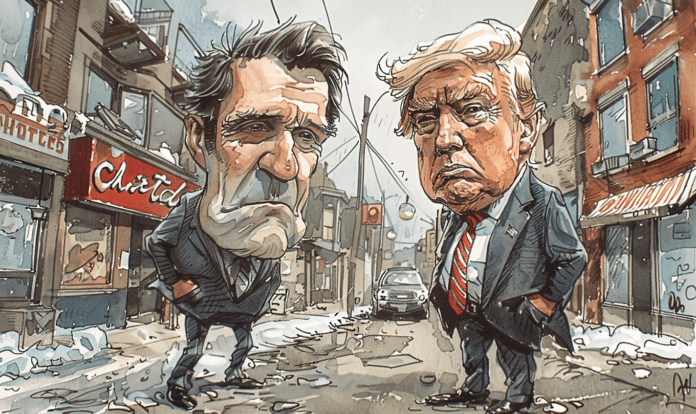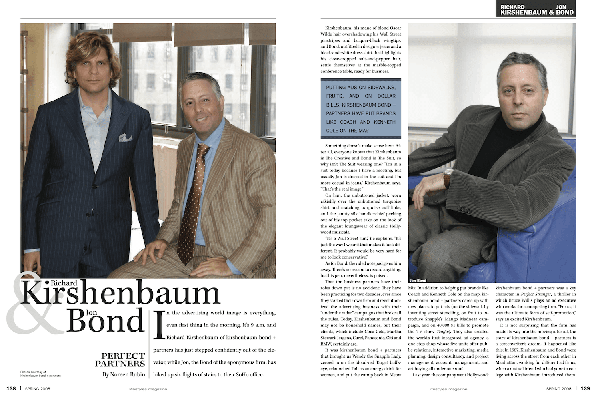Let’s talk about DoubleVerify and Integral Ad Science (IAS), those two juggernauts of ad verification that everyone loves to hate. Or, depending on who you ask, loves to worship. I’m talking about the kind of reverence usually reserved for tech billionaires who promise to save the world with their latest algorithm.
But before you start thinking I’m here to just take potshots, let’s get something straight: this isn’t about gleeful schadenfreude (well, maybe just a little). It’s about dissecting the reality of an industry that’s more smoke and mirrors than the Wizard of Oz.
Let’s start with the basics: DoubleVerify and IAS are supposed to be the gatekeepers of the digital ad world, the ones who ensure that your ads don’t end up next to content that makes you look like you’re endorsing a hate group.
The problem? They are accused often of more like gatekeepers who fell asleep at their post while a parade of questionable content marched right past them.
Remember that scene from The Lord of the Rings where the orcs just blow through the supposedly impregnable gates of Helm’s Deep? Yeah, it’s kind of often seems like that.
The industry is waking up to the idea that maybe, just maybe, these companies aren’t as invincible as they claim to be. Advertisers, publishers, and investors are starting to question the effectiveness of these supposed leaders.
And it’s not just me—people are genuinely asking if ad verification is broken. Mandeep Dalip hit the nail on the head when he pointed out that these giants are “under fire,” with some even going so far as to call the whole system “broken.” But let’s dig a little deeper, because the story isn’t just about a few ad misplacements; it’s about a systemic issue that’s been brewing for years.
The Ad Misplacement Scandals
Remember the days when you could trust that your ad wouldn’t end up next to some insane conspiracy theory or a deep dive into the latest doomsday cult? Yeah, neither do I. The truth is, despite their best efforts—or at least their best marketing efforts—DoubleVerify and IAS have repeatedly found themselves in the hot seat for failing to prevent high-profile ad misplacement incidents. We’re talking about Fortune 500 ads showing up on websites that make you question your faith in humanity. Not exactly the kind of brand association that makes your CMO sleep easy at night.
But how did we get here? The truth is, the digital ad ecosystem is a chaotic mess. It’s a Wild West where everyone’s shooting from the hip, and the lawmen—our friends DoubleVerify and IAS—are often more concerned with looking good on paper than actually doing their jobs. These companies have been accused of letting their guard down, letting ads slip through the cracks and onto platforms that should have been flagged from a mile away.
Keyword Blocking: A Blunt Instrument
Now, let’s talk about keyword blocking—arguably the bluntest instrument in the ad tech toolkit. Imagine trying to perform surgery with a chainsaw; that’s essentially what these companies are doing when they implement keyword blocking. Sure, it’s great for keeping your brand away from content that might tarnish your image, but it’s also a surefire way to nuke your ad revenue if you’re a publisher.
Case in point: during the COVID-19 pandemic, traffic to news sites went through the roof as people desperately sought information. But instead of cashing in, publishers found themselves locked out of ad revenue because the keyword “coronavirus” was basically treated like the digital equivalent of the plague. Advertisers, terrified of being associated with bad news, used brand safety services to block their ads from appearing on any article containing keywords like “coronavirus,” “pandemic,” or even just “news.” The result? News sites were bleeding traffic, but the revenue tap was turned off. It’s like being stranded in the desert with a bottle of water that has a childproof cap—you’re parched, but there’s nothing you can do about it.
Publishers have been fuming over this for years, and the tension between them and the verification firms is palpable. Keyword blocking is supposed to be a safeguard, but in practice, it’s like using a sledgehammer to kill a fly. The collateral damage is enormous, and publishers are left holding the bag.
Diversification: The Hail Mary Pass
So what do you do when the walls start closing in, and everyone’s questioning your effectiveness? You diversify, of course! DoubleVerify and IAS have been expanding into new territories like social media, connected TV (CTV), and artificial intelligence (AI), hoping to cover up the cracks in their traditional business with a fresh coat of digital paint. It’s the classic Hail Mary pass—when all else fails, throw everything at the wall and pray something sticks.
The move into CTV is particularly interesting, given that this space is exploding with potential. As more and more viewers cut the cord and move to streaming platforms, advertisers are following them, wallets in hand. But CTV is also a new frontier, and with new frontiers come new challenges. DoubleVerify and IAS are trying to establish themselves as the go-to verification services in this space, but the jury’s still out on whether they can actually deliver.
Social media, of course, is a different beast altogether. The platforms are walled gardens where companies like DoubleVerify and IAS can only see what the platforms let them see. It’s like trying to solve a jigsaw puzzle with half the pieces missing. Sure, they can slap their “brand safety” label on it, but without full access to the data, it’s hard to trust that the picture is complete.
CheckMyAds: The Skeptics Speak
If you really want to pull back the curtain, look no further than CheckMyAds. These folks have been throwing rocks at the glass houses of ad verification for a while now, and they’ve hit a few sore spots. According to them, DoubleVerify doesn’t really “do” much of anything. Their job is to check whether ads are being served as reported, including viewability (making sure ads are actually showing up on a given website) and brand safety (checking that ads aren’t running alongside toxic content). But the kicker? DoubleVerify’s brand safety ratings are based on data that’s shakier than a house of cards.
In reality, DoubleVerify isn’t measuring anything independently. They’re just reporting on data provided by the platforms themselves. It’s like grading your own homework and then bragging about getting an A+. Sure, it looks good on the surface, but dig a little deeper, and you start to see the cracks.
And it’s not just DoubleVerify. IAS is in the same boat, paddling with one oar in a sea of data they don’t fully control. They’re relying on platforms like Twitter, Meta, and YouTube to play nice and share the data they need to provide accurate reports. But let’s be honest—these platforms are about as transparent as a brick wall. They’ll show you what they want you to see, and nothing more.
The UGC Dilemma
Now, let’s wade into the thick of it—User-Generated Content (UGC). If the internet is a jungle, UGC is its most untamed corner, where the vines are thick, the creatures are wild, and the rules are as fluid as a politician’s promises. This is where anything can happen, and often does. UGC is the internet’s version of a lawless frontier town—part boomtown, part ghost town, and entirely unpredictable. It’s where the youth congregate—Gen Z with their TikToks, memes, and whatever the latest viral challenge is that makes the rest of us feel like we’re 100 years old. But it’s also where the internet’s most unpredictable, offensive, and downright bizarre content takes root and flourishes.
For advertisers, UGC is a double-edged sword. On one side, it’s a goldmine. If you want to reach Gen Z, you’ve got to go where they hang out, and that’s smack dab in the middle of UGC-land. These are the digital spaces where trends are born, memes are minted, and cultural moments go viral before anyone else even knows they’re happening. But on the other side of that sword? Well, let’s just say it’s not all cat videos and dance challenges. UGC is also the breeding ground for the internet’s dark underbelly—the weird, the offensive, and the kind of content that makes you question humanity’s collective sanity.
Enter DoubleVerify and IAS, the supposed sheriffs of this wild frontier. Their job? To keep your precious ads from showing up next to content that could make your brand look like it’s endorsing a cult of tinfoil-hat-wearing conspiracy theorists. Sounds simple enough, right? Except, spoiler alert: it’s not. Because the reality is, they can’t block what they don’t see. And in the world of UGC, there’s a whole lot they don’t see. It’s like trying to herd cats in the dark—blindfolded. Sure, they’ve got their systems, their algorithms, and their fancy tech, but when it comes to UGC, even the best tech in the world is about as reliable as a weather forecast—sometimes you get it right, but other times you end up drenched in a downpour of unexpected chaos.
Here’s the kicker: some brands are perfectly okay with this. Why? Because reaching Gen Z is worth the occasional mishap. For these brands, it’s a calculated risk—like playing Russian roulette, but with their ad spend. They know that the chances of something going horribly wrong are there, but the potential payoff is too big to ignore. And guess what? DoubleVerify and IAS know this too. But you won’t hear them admitting it out loud. They’re not about to throw their clients under the bus just because a few ads end up in less-than-ideal spots. Instead, they quietly adjust, monitor, and keep things as smooth as possible, while their clients continue to chase that ever-elusive Gen Z engagement.
In the end, DoubleVerify and IAS are doing the best they can in a game where the rules are constantly changing and the stakes are sky-high. They’re navigating a digital landscape that’s more treacherous than it appears, and they’re doing it without throwing their clients under the bus. Because at the end of the day, it’s not just about blocking the bad stuff—it’s about understanding the nuances of where the digital audience lives and being flexible enough to keep up with the wild, wild world of UGC.
The Reddit Experiment
To put this into perspective, let’s talk about a little experiment that went down on Reddit. Someone decided to test DoubleVerify’s brand safety and suitability product by running ads on various types of content. The results? Over 99% of impressions landed next to safe content. Sounds impressive, right? But remember, with billions of impressions in play, that 1% still leaves room for millions of ads to end up in some very questionable places.
And let’s not forget that the internet is a vast, constantly shifting landscape. What’s safe today could be a minefield tomorrow. DoubleVerify and IAS are playing a game of whack-a-mole, trying to keep up with the endless flood of new content, new platforms, and new threats. It’s a game they’re never going to win, but that doesn’t stop them from trying.
The Law of Large Numbers
Here’s a fun fact for you: even if DoubleVerify and IAS are 99% effective—and that’s a solid A+ in any classroom—when you’re dealing with tens of billions of impressions, that 1% failure rate means millions of impressions are ending up on questionable material. Let’s break that down. Imagine you’re running a bakery and you sell a billion cookies. You’ve got a 99% success rate of not accidentally baking in a cockroach. That’s great, right? But guess what? That still leaves you with ten million cockroach-infested cookies. Not so appetizing now, is it?
This is the reality of digital advertising, where the stakes are sky-high, and even the tiniest slip-up can spiral into a PR disaster faster than you can say “brand safety.” It’s like trying to juggle flaming swords while riding a unicycle—on a tightrope—over a pit of hungry alligators. Sure, you might be 99% successful, but that 1% is going to leave a mark, and not the kind you can just buff out with a PR statement. It’s the law of large numbers in full, brutal effect.
And here’s where it gets really interesting. DoubleVerify and IAS aren’t just dealing with a lot of data—they’re dealing with **a lot** of data. We’re talking billions of impressions spread across countless platforms, websites, and apps. The sheer scale is mind-boggling, and when you’re operating on that level, even the smallest error can snowball into something that makes headlines. It’s like playing a game of Whac-A-Mole with a hundred moles popping up every second. You’re going to miss a few, and those few are the ones that end up on the front page.
But here’s the kicker: the more these companies try to tighten their grip, the more things slip through the cracks. It’s like trying to catch water with a sieve—no matter how fast you scoop, some of it’s going to leak out. DoubleVerify and IAS have built these massive systems designed to catch every possible issue, but in their quest for perfection, they sometimes create more problems than they solve. They’re not just fighting against the tide; they’re trying to hold back a tsunami with a beach umbrella.
The crux of the issue is that when you’re playing in the big leagues, perfection isn’t just hard—it’s impossible. DoubleVerify and IAS are tasked with ensuring that every single ad, out of billions, lands exactly where it’s supposed to, surrounded by content that won’t make anyone’s grandmother blush. But the reality is that in a world this big, mistakes are inevitable. And when those mistakes happen, they’re not just tiny hiccups—they’re catastrophic, headline-grabbing failures that can send a brand scrambling for damage control.
So what’s the takeaway here? DoubleVerify and IAS are doing the best they can in a game that’s rigged from the start. They’re navigating an impossibly complex landscape where even the smallest misstep can lead to a landslide of problems. But despite the odds, they’re still the ones you want in your corner when you’re stepping into the digital ad ring. Because even if they’re not perfect, they’re a hell of a lot better than going it alone.
























